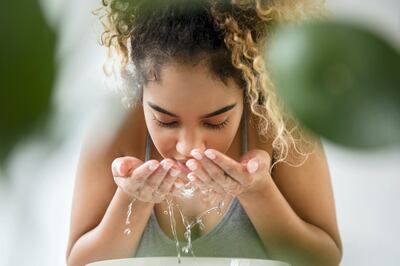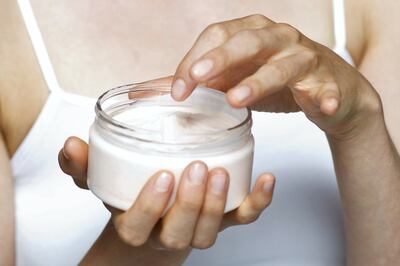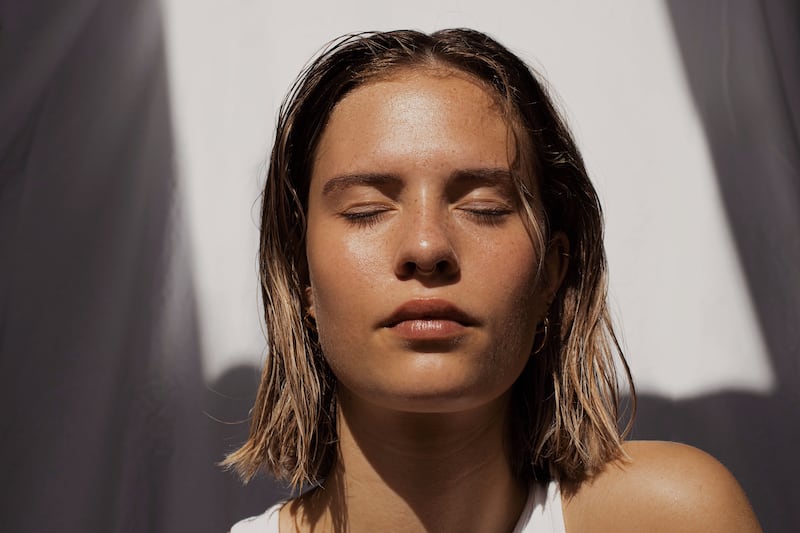Slugging. Admittedly, it's not the most appealing of names for a skincare routine, particularly when it's revealed that the name was adopted in South Korea because the slimy mess it makes is reminiscent of a slug trail. Yet, despite the unpleasant mental images, this new skin regime is taking TikTok by storm – the hashtag has racked up more than 189 million views.

So what is it exactly?
Put simply, slugging is the practice of smearing a layer of a heavy occlusive, such as petroleum jelly, on the face at night before going to bed.
While messy – yes, it will make your face look slimy and yes, it will get all over your pillow – the science behind it is pretty solid. Adding a protective barrier to the skin before going to sleep helps to seal in moisture, resulting in softer, smoother and more hydrated skin in the morning.
As Frauke Neuser, Olay's scientific communications senior director, explains, occlusives are ”moisturising agents that work by forming a protective layer on the surface of your skin and create a barrier to prevent moisture loss". In short, adding a layer of petroleum jelly as the final step in your beauty routine will help ensure your other skincare products can get to work.
Any petroleum based occlusive can be used, including products such as Waxelene and Aquaphor, although most people will probably be more familiar with the Vaseline brand. It is worth noting, however, that the extra layer does not provide any moisture. To achieve the best results, skin should be cleaned and properly moisturised before the petroleum-based layer is added, as it works by effectively sealing in moisture that would otherwise evaporate overnight.
Board-certified New York dermatologist Hadley King says that, for best results, it is important to aim for multiple forms of moisturiser before adding the Vaseline. Look for products that contain humectants – compounds that attract water from the air – and emollients, which add intense moisture, and even oils.
"You can start with a serum containing humectants and add a face oil with emollients," King says. "The last step would be slugging petrolatum as the occlusive.”
Those who will benefit the most from this routine, King says, are those with dry skin or who are exposed to dry conditions, such as air conditioning, because this increases “transepidermal water loss and dryness of the skin".
What's involved?
Slugging is surprisingly simple, and can be incorporated into a skincare routine.
Step one: Cleanse your face thoroughly.
Step two: Use a hydrating product, such as hyaluronic acid or glycerin that increases the water content on the skin.
Step three: Use a moisturiser, like a lotion, oil or cream.
Step four: Add a pea size amount of occlusive, such as Vaseline, Aquaphor or CereVe to your skin, making sure to get an even coverage. While TikTok users seem to be smearing handfuls on the face, this is not necessary. A small quantity is effective.
Step five: To protect your pillow, think about covering it with a towel.
Step six: Give the products a few minutes to get to work, and then get into bed as normal.
Step seven: In the morning, clean off the petroleum jelly using your normal cleanser. There is no need to wash your face.

How does it work?
Petroleum jelly is virtually unchanged since it was first discovered by Robert Augustus Chesebrough in 1859, after he noticed oil workers using a white, gooey jelly to heal wounds and protect their skin.
A mixture of mineral oils and waxes, petroleum jelly remains in a semi-solid state, making it ideal for rubbing on to skin and, thanks to its main ingredient, petroleum, it creates a water resistant barrier. When applied to the skin, this not only keeps water out but also keep water in, making it useful when wanting to maximise the effectiveness of hydrating products on the skin. While the jelly itself does not add any moisture, it is believed it helps increase the potency of other products, as it prevents evaporation.
Who can use it?
While TikTok is filled with people showing off soft, dewy skin, it is important to be aware of your skin type before embarking on slugging. If you have skin prone to oiliness, or acne, for example, this is probably not the best option for you.
Debra Jaliman, author of the book Skin Rules, explains. "Slugging before you go to sleep is fine if you have very dry skin, but not a good idea for acne-prone skin." The risk, she says, is that with the potential to trap oils and clog the skin's pores, slugging can aggravate acne-prone skin and contribute to breakouts.
Those with dry or normal skin that is not prone to acne, meanwhile, will benefit from the technique. Neda Mehr, dermatologist at Pure Dermatology Cosmetic & Hair Centre, says that “if your skin is dry to normal, you can slug as frequently as every night".
What benefits can be expected?
Thanks to its reliance on an already known ingredient, petroleum jelly, the benefits of slugging are already well documented, so users can expect skin to look well moisturised and healthy. There is even the potential for a reduction in the appearance of wrinkles, making it a good option for those with more mature skin.
"With ageing comes decreased barrier repair, decreased hydration, saggy skin and more obvious wrinkles," Mona Gohara, associate clinical professor of dermatology at the Yale School of Medicine, says. "Slugging essentially acts as a buoy to the barrier, keeping water locked in and the skin plumped."





